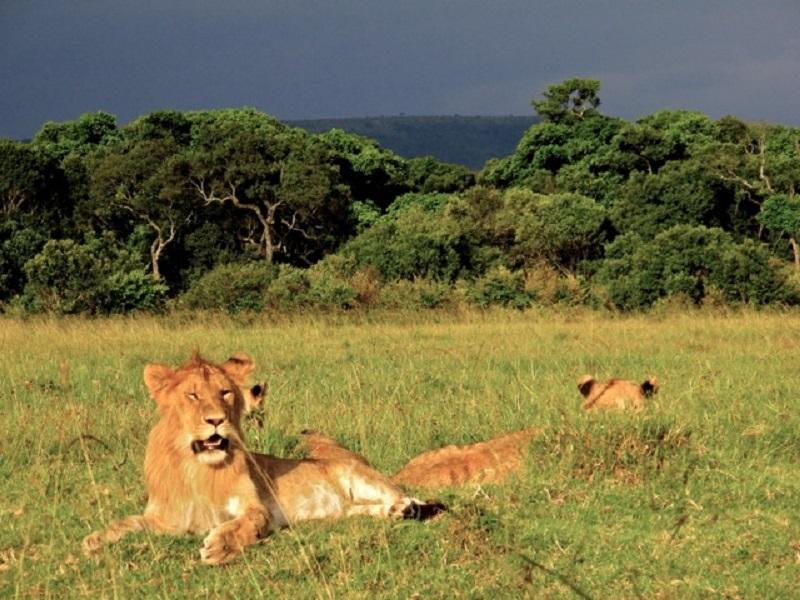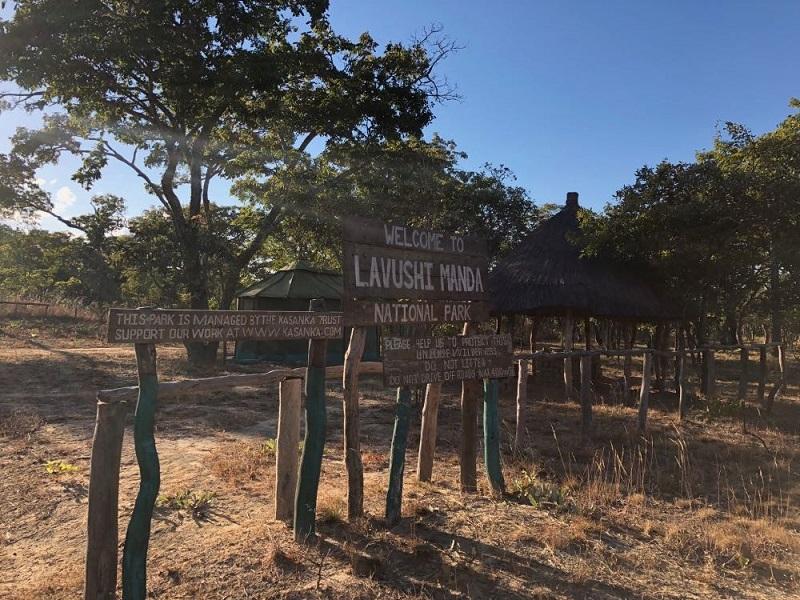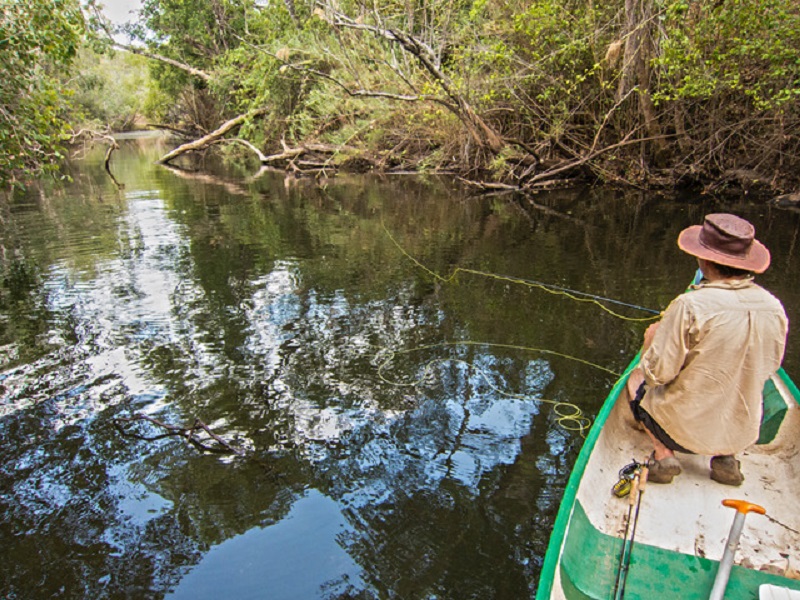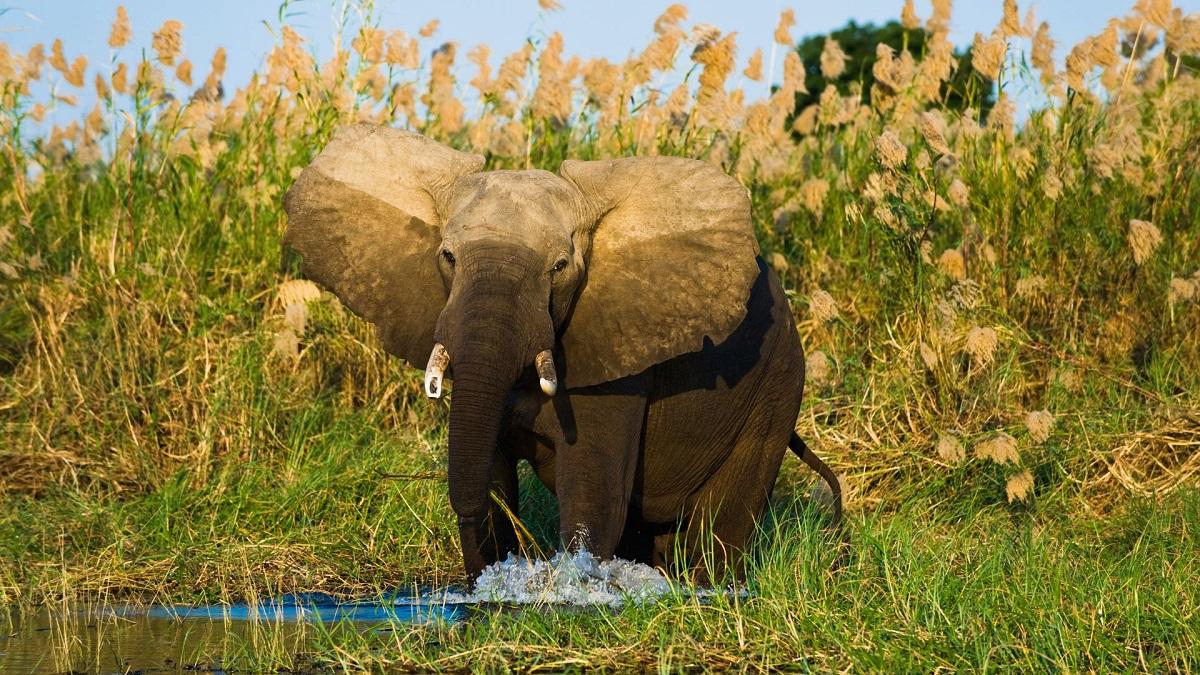One of Zambia’s most coveted natural gems, Lavushi Manda National Park offers a pristine and secluded escape into the wilderness. Tucked away in the northern reaches of the country, this hidden paradise remains off the beaten tourist path, making it an ideal destination for those seeking serenity and adventure. Spanning 1,500 square kilometers, the park has a rich variety of landscapes, from open dambos and miombo woodlands to riparian vegetation and rolling hills.
The Lukulu River flows through the heart of Lavushi, carving out impressive features such as the Kapandalupilli Falls. This untouched terrain provides a natural haven for wildlife, including rare and threatened bird species. Lavushi Manda’s dense riverine vegetation also offers excellent birdwatching opportunities, especially for spotting the unique palm-nut vulture.
Though not as famous as other Zambian parks, Lavushi Manda offers a serene escape for nature lovers seeking an off-the-beaten-path adventure, far from the crowded safari circuits. The park is home to a diverse array of wildlife, including antelope species, elephants, and an impressive range of birdlife. Its isolation ensures a more intimate connection with nature, making it a perfect destination for those looking to experience Zambia’s wilderness in a peaceful and pristine setting.
Please Download Our Mobile App here
Overview of Lavushi Manda National Park
The park is characterized by stunning landscapes, including miombo woodlands, open dambos, rugged hills and rivers like the Lukulu and Lulimala. The park’s diverse ecosystem supports a wide variety of wildlife and over 270 species of birds, making it a critical birding area.
While its wildlife population was heavily affected by poaching, conservation efforts since 2011 have made strides in protecting the park’s inhabitants, including species such as lions, leopards, roan antelopes and sable antelopes.
Lavushi Manda also offers adventurous activities like hiking, birdwatching, fishing, and canoeing along the Lukulu River. Its untamed nature and lack of tourist crowds make it an ideal destination for those seeking solitude in nature.
Wildlife in Lavushi Manda National Park

The wildlife in Lavushi Manda National Park may not be as prolific as in larger parks like Kafue or South Luangwa, but it is no less captivating. The park is home to several large mammals, including elephants, which are frequently seen in and around the wetlands. Antelope species such as sable, roan, and reedbuck are also common, grazing on the park’s grasslands.
Predators such as lions and leopards are present but are less commonly sighted due to the dense vegetation and the park’s relatively low visitation. However, Lavushi Manda National Park offers excellent opportunities for observing smaller mammals and an impressive variety of bird species. The wetlands, in particular, attract waterfowl and other birdlife, making the park a paradise for birdwatchers.
Other notable species in the park include warthogs, bushbucks, and vervet monkeys. The park’s riverine areas support hippos and crocodiles, and the surrounding forests are home to a variety of reptiles and amphibians. The relative isolation of the park also means that many of the species here are not disturbed by large numbers of tourists, allowing for more natural wildlife behavior.
Best Time to Visit Lavushi Manda National Park
The best time to visit Lavushi Manda National Park is during the dry season, which runs from May to October. During this period, wildlife is easier to spot as animals congregate around the park’s wetlands and rivers in search of water. The dry season also offers more comfortable conditions for game drives and hiking, as the weather is cooler and the roads are more accessible.
The rainy season, from November to April, brings lush greenery to the park, transforming the landscapes into a verdant paradise. However, heavy rains can make some areas of the park difficult to access, and game viewing may be more challenging due to the thick vegetation. On the other hand, the wet season is ideal for birdwatching, as migratory species arrive, and the wetlands are teeming with life.
Getting to Lavushi Manda National Park

The park is situated between Mpika and Serenje, about 100 km from the Great North Road. You can reach the park via a 4×4 vehicle, as road conditions can be challenging, particularly during the rainy season (November to April).
There is no public transport directly to the park, so hiring a car or arranging a safari guide is essential. Lusaka, Zambia’s capital, is the closest major city, about 600 km away. The nearest airports are in Mpika and Serenje, where charter flights can be arranged.
Other Activities in Lavushi Manda National Park
In addition to game drives, Lavushi Manda National Park offers a range of activities that allow visitors to immerse themselves in the natural beauty of the area. Walking safaris are a popular option for those who want to explore the park’s landscapes on foot, offering a more intimate experience of the park’s flora and fauna.
Birdwatching is another major draw for visitors to Lavushi Manda National Park. The park’s wetlands attract a variety of waterfowl, and the miombo woodlands are home to a diverse range of forest-dwelling bird species. Visitors can enjoy guided birdwatching tours led by experienced local guides.
For those interested in the local culture, visits to nearby villages can be arranged, where visitors can learn about the traditions and way of life of the local communities that live near the park.
Park Fees for Lavushi Manda National Park
As of 2024, the park fees for Manda National Park are:
- Foreign Visitors (Adults): $20 per person per day
- Foreign Visitors (Children): $10 per person per day
- Zambian Residents (Adults): ZMK 100 per person per day
- Zambian Residents (Children): ZMK 50 per person per day
These fees contribute to the ongoing conservation efforts in the park and help to maintain its facilities.
FAQs: Visiting Lavushi Manda National Park

Is Lavushi Manda National Park suitable for self-drive safaris?
Yes, Lavushi Manda National Park is suitable for self-drive safaris, but a 4×4 vehicle is recommended, especially during the rainy season when roads can be challenging.
Are guided tours available in Lavushi Manda National Park?
Yes, guided game drives and walking safaris are available and are highly recommended to enhance your wildlife viewing experience and learn more about the park’s ecosystems.
Can I visit nearby cultural sites or villages?
Yes, visits to nearby villages can be arranged to experience the local culture and learn about the traditional way of life of the communities that live near the park.
Conclusion
Lavushi Manda National Park offers a unique and tranquil safari experience in one of Zambia’s most remote and untouched wilderness areas. Its diverse ecosystems and abundant wildlife make it an ideal destination for adventurous travelers seeking to explore Zambia’s natural beauty.



